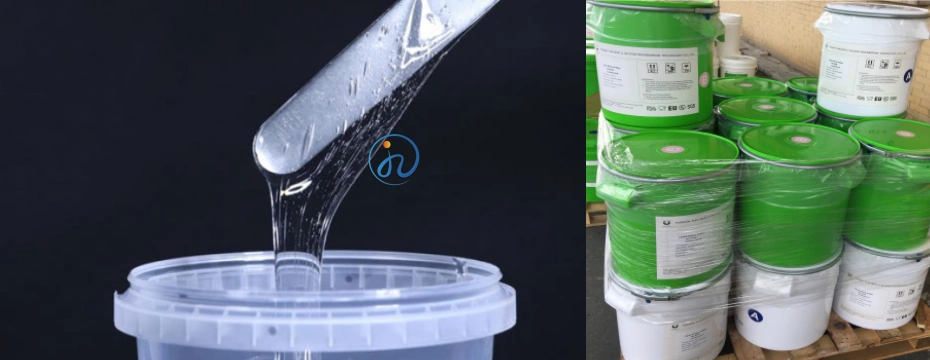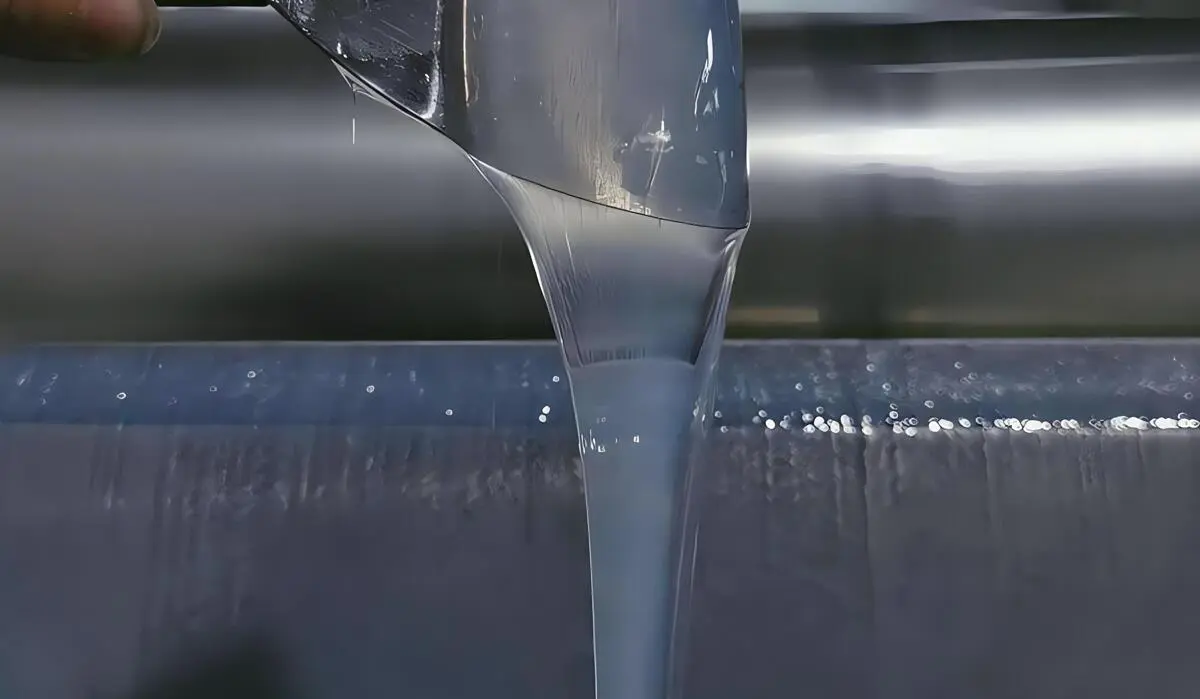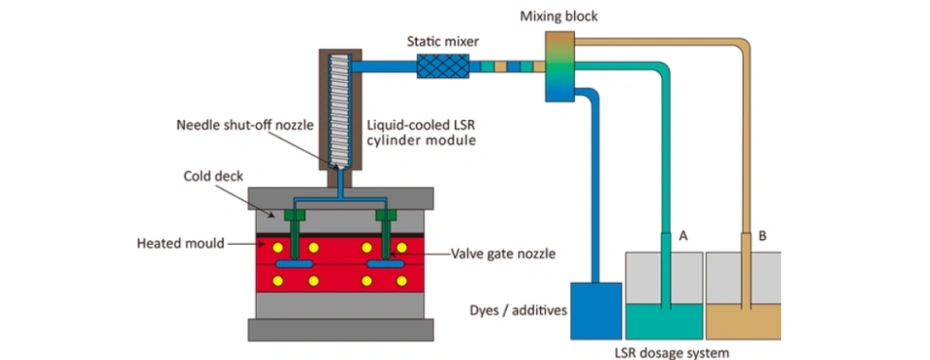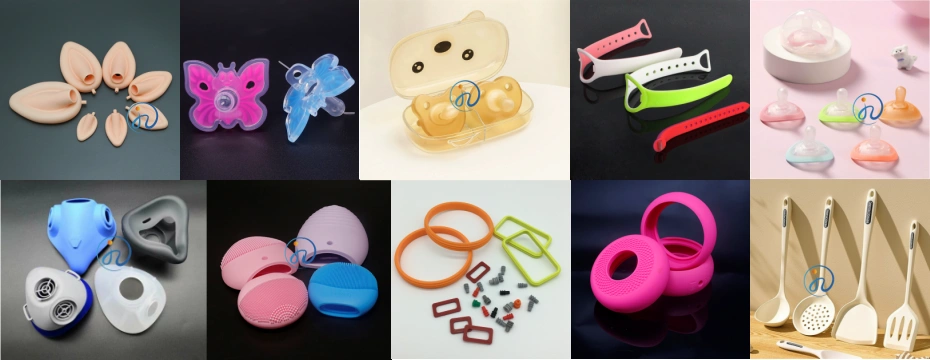Table of Contents
ToggleIn the world of high-performance elastomers, one material stands out for its unparalleled purity, durability, and versatility: Platinum-cured Liquid Silicone Rubber (LSR). If you’ve ever wondered what makes a medical implant safe for the human body, a baby bottle nipple exceptionally durable, or a kitchen spatula heat-resistant, the answer often lies in this advanced material. But what exactly is Platinum-cured silicone, and why has it become the gold standard for demanding applications across countless industries? This comprehensive guide dives deep into the science, benefits, and multifaceted uses of LSR, explaining why it is a critical material in modern manufacturing.

What is Platinum-Cured Liquid Silicone Rubber (LSR)?
At its core, Platinum-cured Liquid Silicone Rubber is a two-part, high-purity elastomer system consisting of a base (Part A) and a catalyst (Part B). The “liquid” aspect refers to its initial viscosity, which allows it to be easily pumping and injection molded into complex shapes. The “silicone rubber” denotes its polymer family, derived from silicon, oxygen, carbon, and hydrogen.
The defining characteristic, however, is the “Platinum-cured” part. This refers to the curing mechanism—a platinum-based catalyst that facilitates an addition-cure reaction. This process is fundamentally different from the more common peroxide-cure system used for some solid silicones. The platinum catalyst initiates a reaction where the two liquid components cross-link without producing any byproducts. This results in a remarkably pure, stable, and consistent silicone rubber.
The Science Behind the Cure: Platinum vs. Peroxide
To truly appreciate Platinum-cured silicone, it’s essential to understand how it differs from peroxide-cured alternatives.
Peroxide-Cured Silicone:
- Curing Mechanism: Uses organic peroxides as catalysts.
- Byproducts: The curing process breaks down the peroxides, releasing volatile byproducts and gases. This can lead to a slight odor and potential porosity.
- Post-Curing: Often requires a secondary, high-temperature post-curing cycle to drive out these byproducts and stabilize the material.
- Applications: Suitable for less critical applications where extreme purity is not a necessity.
Platinum-Cured Silicone (LSR):
- Curing Mechanism: Uses a platinum complex as a catalyst.
- Byproducts: The addition reaction produces no byproducts. This is a “clean” cross-linking process.
- Post-Curing: Typically requires no post-curing, making it a more efficient single-step process.
- Result: The absence of byproducts is what grants LSR its exceptional purity, optical clarity, and biocompatibility, making it ideal for medical and food-contact applications.

Key Properties and Advantages of Platinum-Cured Silicone
The unique curing chemistry of Platinum-cured silicone imparts a suite of superior properties that make it a material of choice for engineers and designers.
1. Exceptional Purity and Biocompatibility
This is the most significant advantage. With no harmful byproducts, LSR is non-toxic and non-irritating. It meets stringent international standards for biocompatibility (such as USP Class VI and ISO 10993), making it safe for prolonged contact with skin, bodily fluids, and implants.
2. High-Temperature Resistance
Platinum-cured silicone can typically withstand continuous temperatures from -50°C to 200°C (-58°F to 392°F) and short-term exposure to even higher heats. This makes it perfect for applications like automotive gaskets, kitchenware, and LED lighting seals.
3. Excellent Flexibility and Tear Strength
LSR offers outstanding elastic recovery and durability. It can be stretched and compressed repeatedly without taking a permanent set, and modern grades boast high tear strength to resist damage, which is crucial for components like seals and membranes.
4. Transparency and Color Stability
The inherent clarity of LSR allows for the production of transparent parts, which is vital for medical fluid lines and optical applications. It can also be coloring with FDA-approved pigments with excellent long-term color stability, resisting yellowing or fading.
5. Chemical and Environmental Resistance
LSR is resistant to moisture, UV radiation, ozone, and many chemicals. It does not support microbial growth and is easy to sterilize using various methods, including autoclaving (steam), gamma radiation, and ETO gas.
6. Hydrophobicity and Electrical Insulation
Its water-repellent (hydrophobic) nature makes it an excellent sealant and a great material for electrical insulation, even in humid environments.
The Manufacturing Process: How LSR is Shaped

Transforming liquid components into a finished product is a highly efficient process, primarily Liquid Silicone Rubber Injection Molding.
- Material Handling: The two-part LSR system is storing in separate drums or tanks. They are fed via hoses to a precision metering and mixing unit.
- Metering and Mixing: A static mixer thoroughly combines Parts A and B in an exact 1:1 ratio. The platinum catalyst is activated as the components mix.
- Injection Molding: The mixed liquid is injected into a heated mold cavity. The heat (typically 150-200°C) rapidly accelerates the platinum-cure reaction.
- Curing and Demolding: The part cures in seconds to minutes. Thanks to the fast cure time and lack of byproducts, the finished part can be demolding immediately, often without any flash. This allows for high-volume, automated production with minimal waste.
Diverse Applications of Platinum-Cured Silicone
The unique properties of LSR have led to its adoption in a wide range of industries.
Medical and Healthcare:
- Critical Components: Catheters, respiratory masks, valve diaphragms, wound care dressings.
- Implants: Cochlear implants, tubing, drug delivery systems.
- Consumables: Septa, stoppers, and seals for vials and syringes.
Baby Care Products:
- Feeding Products: Baby bottle nipples, pacifiers, teethers. Their purity, soft feel, and durability are unmatched.
Automotive:
- Seals and Gaskets: Ignition coils, engine gaskets, sensor seals.
- Components: Vibration dampers, airbag covers, connectors.
Consumer Electronics:
- Keypads and Seals: Durable, tactile keypads for remote controls.
- Waterproof Seals: Gaskets for smartwatches, smartphones, and outdoor electronics.
Food and Beverage:
- Kitchenware: Spatulas, baking molds, ice cube trays.
- Seals: Gaskets for coffee machines, water bottles, and food containers.

Platinum-Cured Silicone vs. Other Materials
- vs. Thermoplastic Elastomers (TPEs): While TPEs are cost-effective, LSR offers superior heat resistance, purity, and long-term performance without plasticizer migration.
- vs. Peroxide-Cured Silicone: As discussed, Platinum-cured silicone is purer, more consistent, and better suited for high-precision, high-purity applications.

Conclusion: Why Platinum-Cured Silicone is the Future
Platinum-cured Liquid Silicone Rubber is more than just a material; it’s an enabling technology that allows for innovation in the most demanding fields. Its unparalleled combination of purity, durability, and versatility, derived from its unique platinum-based curing process, makes it irreplaceable. From saving lives in the operating room to ensuring the safety of our youngest family members, LSR’s role is both critical and expanding. As technology advances and the demand for high-performance, safe, and reliable materials grows, Platinum-cured silicone is poised to remain at the forefront of material science and manufacturing.